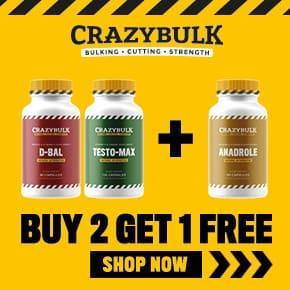Key Takeaways
- Millennials prioritize flexible, tech-driven fitness routines that fit their busy lifestyles and values.
- Group workouts, boutique classes, and at-home training options are popular, thanks to their convenience and sense of community.
- Technology and social media play a significant role, enabling tracking, virtual challenges, and sharing progress.
- Wellness and mindfulness are key, with many millennials focusing on mental health, recovery, and holistic well-being alongside physical gains.
- Brands are adapting by offering customizable fitness solutions, eco-friendly choices, and integrated recovery tools to meet millennial preferences.
You lace up your sneakers for a sunrise run but your smartwatch buzzes—reminding you about tonight’s yoga fusion class and tomorrow’s virtual HIIT session. Fitness isn’t just a routine anymore—it’s a lifestyle that fits your schedule and values. As you scroll through your feed you notice friends sharing everything from plant-based meal prep to outdoor bootcamps. Millennial fitness trends aren’t about one-size-fits-all workouts—they’re about finding what moves you and making wellness a part of your everyday life.
Understanding Millennial Fitness Trends
Millennials like you shape fitness with new routines and fresh ideas. You might skip long gym sessions. Instead, you lift weights at home, stream on-demand workouts, or use fitness apps that track every set and rep. Ever try a virtual group challenge? Many do, joining friends for step goals or muscle-building contests. This makes even solo lifting more fun.
You see, bodybuilding isn’t just a sport now—it’s a lifestyle. Most millennials care about the look, strength, and how training fits real life. You want your fitness to work with your job, kids, and hobbies. You’re not alone if you track macros, plan plant-based meals, or count recovery days as progress. Recovery gadgets, like massage guns and foam rollers, fill gyms and bedrooms.
Supplements are everywhere. Ask yourself: how many powders, shakes, or pre-workouts do you rotate each month? You and your friends might compare notes on creatine, BCAAs, or plant-based protein brands after a tough session. This helps you try new things while pushing for that little extra size or faster bounce-back between workouts.
Want to see gains? Most millennials focus on performance. They try HIIT, Olympic lifts, or resistance band routines to target every muscle group. Have you noticed gyms now offer group classes for everything, from kettlebells to power yoga? These options make it easy to chase size and strength or recover when you’re feeling beat.
Millennials make fitness social, tech-driven, and personal. You build muscle, track your progress, and share stories online. You want strong bodies and balanced lives—something you can feel proud of in and out of the gym.
Key Factors Shaping Millennial Fitness Choices
Your fitness choices reflect what matters to you—getting stronger, building muscle, feeling better. For many, it’s not just about lifting weights; it’s about using the right tools, support, and routines that match your life and goals.
The Role of Technology and Social Media
Technology shapes your training every day. Do you check your reps and sets on your watch or phone? Most likely, yes. Wearable tech like smartwatches lets you track heart rate, calories, and even sleep. This helps you see where you are and plan where you’re going.
Use workout apps to log your lifts, spot weak spots, and push progress. For example, you can set weekly targets for bench press or squats, then celebrate the wins. Social media helps, too. It’s more than just scrolling—you get ideas for new workout moves, diet tips, and see what works for real people. Post your results for motivation, or join fitness groups where people share progress and encourage each other.
Emphasis on Inclusivity and Community
Fitness is more fun with others. Group training builds muscle and keeps you coming back. Maybe you meet friends at the gym, or try new classes together. These are great for bodybuilders because you pick up form tips, spot for each other, and push further as a team.
You find all kinds of people chasing strength and health in one place. No matter your size or skill, there’s a group for you. Some train hard for powerlifting, some focus on recovery and stretching. Even online groups count—many join bodybuilding chats, share supplement stacks, or ask for advice. This sense of community keeps you engaged, makes every workout feel easier, and turns fitness into a team sport.
When you mix strong tech with strong support, your journey to more size, power, and recovery gets easier—every step, rep, and meal.
Popular Fitness Activities Among Millennials
Millennials pick workouts that fit into life and help you get strong. Many try new ways to train for better results and faster recovery. Want to build more muscle or break your last record? These activities can help.
Group Workouts and Boutique Classes
Group workouts make it fun to lift, sweat, and get fit together. Ever try a bootcamp, HIIT class, or heavy kettlebell session? These are all top choices. You work hard in a group and push each other to new goals. In boutique gyms, you get small classes and coaches who watch your form. Miss a rep? Someone cheers you on. Want to make muscle gains? HIIT and circuit classes mix weights with cardio, so you boost size and burn fat. You also meet others who share your goals and tips about supplements and recovery shakes. Many bodybuilders join these groups to trade advice and build a fitness team.
At-Home Fitness Answers
You can train hard from home with your own tools and tech. Like to lift on your schedule? Home workouts let you use dumbbells, bands, or bodyweight moves. Many use apps and online classes for new routines. You can follow a muscle-building program right from your phone. Wearables and fitness trackers show your steps, heart rate, and calories burned. Real-time stats help you tweak your next workout—should you add more sets or switch to a heavyweight? If you like tracking progress, these devices give daily feedback. Want a quick fix after a tough session? Some use massage guns and smart recovery tools at home to speed up muscle healing.
What activity fits you best? Many bodybuilders find a mix of group classes and home strength routines works to build size, power, and keep workouts fresh.
The Influence of Wellness and Mindfulness
Wellness and mindfulness shape how you train and recover. Want to boost your muscles and feel better every day? Many bodybuilders use fitness not just to get bigger but also to manage stress and keep a clear head. You’ll see people pause to stretch, breathe, or meditate after heavy lifts. Why? Because feeling good helps with every rep and every set.
Mental wellness gives you an edge. When you train hard, your brain needs recovery too. Think about how you sleep after leg day or when you handle work, friends, and gym life. More than 7 in 10 millennials say they exercise to help their minds as much as their bodies. Taking five minutes for mindfulness, like breathing exercises, can help you focus before a big lift or cool down after.
Mindful routines mean you notice small changes in strength or mood. Ever tried tracking how you feel before and after a workout? That simple check helps you spot what works for you. While doing curls or squats, some people use apps or smartwatches to track progress and stress. Wearable tech also shows how your workouts affect your sleep, mood, and recovery.
Recovery and wellness now mix in your daily plan. Stretching, rest days, or using foam rollers helps your muscles grow. Some muscle-builders swap tips about their best sleep or favorite recovery tools. Good wellness habits, like sticking to a bedtime or drinking water after training, boost results—especially if you’re chasing personal bests.
Your story matters. Maybe you added five pounds to your bench and felt proud—did you also sleep better that week or feel calmer? Wellness and mindfulness aren’t just buzzwords. They let you stay strong longer, push through plateaus, and avoid burnout.
Do you ever notice how your mood or energy jumps after a workout? That’s wellness in action, supporting not just your muscles but your whole life.
How Brands Are Adapting to Millennial Preferences
Brands watch for millennial trends to create fitness options that suit your busy life and values. When you train for size and strength, you notice more gyms now offer resistance machines, heavy free weights, and bands. Some gyms add functional fitness zones so you can try exercises that help you move better outside the gym too. That helps with both strength and real-life performance.
Have you looked for advanced recovery gear or new supplements lately? Many brands now carry massage guns, foam rollers, and ready-made protein shakes. Easy access to these keeps your body feeling strong and ready for the next session. Brands share tips on when to use supplements so you get the most growth and better recovery.
Maybe you like seeing your wins in real numbers. Top brands create wearable trackers and app-linked devices just for that. You can track your sets, see your muscle gains, and even check your sleep for better recovery. Most apps link right to your phone so you see your progress after every workout.
Mental health matters to you too, doesn’t it? Over 7 in 10 millennials say exercise helps their mind as much as their muscles. That’s why many brands include guided cool-downs, breathing routines, and mindfulness prompts in workouts. Group classes and live streams often end with a few minutes just to relax your mind.
Looking for fun when you train? Group energy helps you push harder. Studios and gyms offer more boot camps, HIIT classes, and strength-building groups. You get to meet others, share tips, and stay motivated. Ever tried a virtual group workout? Many platforms now stream classes so you can join in from home and still feel part of the crew.
Eco-friendly? Many new gyms use green materials, energy-saving lights, and less plastic. Brands know you care about the planet as much as your gains. Some even run community clean-up events or rewards for eco choices.
If you like expert help, look for instructors with real muscle-building experience. Big brands train their staff to help with your form, give you new ideas, and keep you safe. Have you ever followed a trainer’s live stream? Lots of brands now offer those, so you can ask questions and get tips right from the pros.
Want snacks after your workout too? Shops add protein-rich mini-meals, bars, and healthy shakes right near check-out. This makes it easy to fuel up fast after training, just like you see others do online.
You get more personal choices now. Your schedule, fitness level, and favorite types of movement all matter. That’s why you’ll see more custom plans, video tutorials, and flexible classes everywhere. It’s all designed to help you get bigger, stronger, and happier—while enjoying the journey your way.
Conclusion
Your fitness journey as a millennial is unique and ever-evolving. With so many options at your fingertips, you’re empowered to build routines that fit your lifestyle, values, and goals. Whether you thrive on community support, love tracking your progress, or prioritize mindfulness, today’s trends give you the tools to make wellness personal and sustainable.
Embrace what works for you and don’t be afraid to try new approaches. The future of fitness is all about flexibility, connection, and supporting your well-being—both physically and mentally.
Meet BDPT Voices: Dr. Olivia Sterling, Jackson “Jax” Fairweather, and Aria Montgomery. Together, they form the analytical and creative heart of BDPT, delving into the world of celebrity physical transformations. From medical insights to sports analysis to entertainment trends, BDPT Voices offers a multifaceted exploration that captivates, informs, and challenges readers.




